Connect With Us
Blog
Ultrasound Effective in Treating Heel Pain
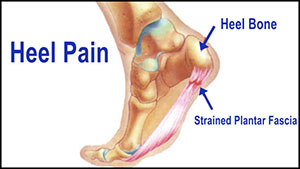 Doctors attempting to find the cause behind heel pain in their patients may be creating more problems if their examinations do not include anultrasound. An estimated 10 percent of people will experience heel pain at least once in their lives. Plantar fasciitis is often pegged as the most common cause of heel pain. Other causes, however, including a tear in the ligament or a fatty cyst could be behind the pain.
Doctors attempting to find the cause behind heel pain in their patients may be creating more problems if their examinations do not include anultrasound. An estimated 10 percent of people will experience heel pain at least once in their lives. Plantar fasciitis is often pegged as the most common cause of heel pain. Other causes, however, including a tear in the ligament or a fatty cyst could be behind the pain.
Anyone can wind up suffering from heel pain. If your heel is hurting, see one of our podiatrists of The Podiatry Center, PC. Our doctors will treat your heel pain symptoms in addition to other podiatric-related needs.
Causes of Heel Pain
- Heel pain is often associated with plantar fasciitis. The plantar fascia is a band of tissues that extends along the bottom of the foot. A rip or tear in this ligament can cause inflammation of the tissue.
- Achilles tendonitis is another cause of heel pain. Inflammation of the Achilles tendon will cause pain from fractures and muscle tearing. Lack of flexibility is also another symptom.
- Heel spurs are another cause of pain. When the tissues of the plantar fascia undergo a great deal of stress, it can lead to ligament separation from the heel bone, causing heel spurs.
Why Might Heel Pain Occur?
- Wearing ill-fitting shoes
- Wearing non-supportive shoes
- Weight change
- Excessive running
Treatments
Heel pain should be treated as soon as possible for immediate results. Keeping your feet in a stress free environment will help. If you suffer from Achilles tendonitis or plantar fasciitis, applying ice will reduce the swelling. Stretching before an exercise like running will help the muscles. Using all these tips will help make heel pain a thing of the past.
With the advancements in technology and greater knowledge of how muscles and joints work, physical therapists can turn things around dramatically.
If you have any questions, please feel free to contact our office in Millburn, NJ. We offer the newest diagnostic and treatment technologies for all your foot care needs.
APMA Study Finds Americans Don’t Care About Their Feet
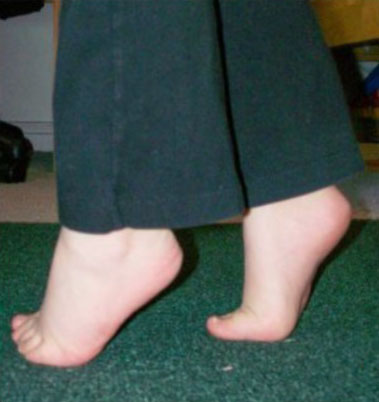 The American Podiatric Medical Association recently published a study revealing that much of this nation’s foot pain goes untreated. In a survey of 1,000 people over the age of 18, 77% reported experiencing foot pain, but only a third of those claim they would see a podiatrist. Half of the participants with foot pain say that the pain has hindered walking, exercising, playing with grandchildren, and other daily activities.
The American Podiatric Medical Association recently published a study revealing that much of this nation’s foot pain goes untreated. In a survey of 1,000 people over the age of 18, 77% reported experiencing foot pain, but only a third of those claim they would see a podiatrist. Half of the participants with foot pain say that the pain has hindered walking, exercising, playing with grandchildren, and other daily activities.
Among the group who sought podiatric help, 88% reported a quick diagnosis and 76% received treatment that eliminated the problem. A third of the group said that their visits to the podiatrist exposed other health concerns, such as diabetes, circulatory issues, and nerve issues.
"It's not surprising to see how many people are affected by foot pain, when survey results show that we view our feet as the least important body part in terms of our overall health and wellbeing," said AMPA President Frank Spinosa. "Our feet are literally and figuratively the furthest things from our minds."
If you are experiencing pain in the feet or ankles, don’t join the stubborn majority refusing treatment. Seek the assistance of one of our podiatrists of The Podiatry Center, PC. Our doctors will provide the care you need to keep you pain free and on your feet.
What is a Podiatrist?
Someone would seek care of a podiatrist when they have suffered a foot injury or have common foot ailments such as: heal spurs, bunions, arch problems, deformities, ingrown toenails, corns, foot and ankle problems etc.
Podiatric Treatment
A podiatrist will treat the problematic areas of the feet, ankle or lower leg by prescribing the following:
- physical therapy
- drugs
- perform surgery on lower extremity fractures
- orthotic inserts or soles
A common podiatric procedure a podiatrist will use is a scanner or force plate which will allow the podiatrist to know the designs of orthotics. Patients are then told to follow a series of tasks to complete the treatment. The computer will scan the foot a see which areas show weight distribution and pressure points. The podiatrist will read the analysis and then determine which treatment plans are available.
For more information about Podiatrists, follow the link below.
If you have any questions, please feel free to contact our office located in Millburn, NJ. We offer the newest diagnostic and treatment technologies for all your foot and ankle needs.
Wearing the Wrong Shoes is the Culprit to Foot Deformities and Pain
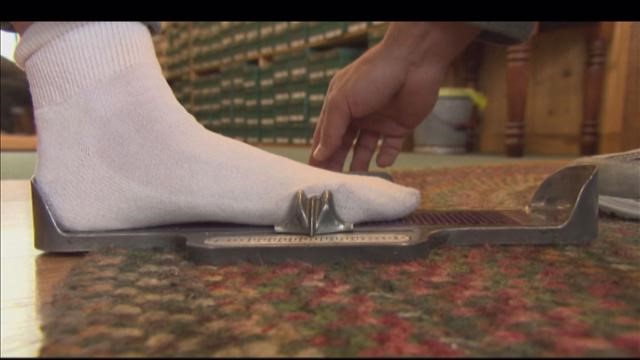 According to a study conducted by the Institute for Preventive Foot Health, more than half of us suffer from foot problems and often these problems are directly related to our shoes. Wearing the wrong shoes can lead to life-long deformities that require surgery to fix said Consumer Reports On Health.
According to a study conducted by the Institute for Preventive Foot Health, more than half of us suffer from foot problems and often these problems are directly related to our shoes. Wearing the wrong shoes can lead to life-long deformities that require surgery to fix said Consumer Reports On Health.
High heels can shorten your Achilles tendon, and can trigger plantar fasciitis; even flat shoes can harm the feet due to lack of support and cushioning according to Cami Marshall of WEMY News 2. Consumer Reports On Health suggests on opting for a lower heel to minimize pressure off the ball of your foot. Also it is important to make sure there is adequate space in the toes, and avoid shoes that have thin, little, or no support. Marshall states that the most common problem is simply wearing the wrong shoe size.
Spending time to find the right shoe, and undergo a shoe fitting process can help determine what’s right for you. A podiatrist like Dr. Howard Hyman of The Podiatry Center, P.C. can provide you with additional advice, and appropriate care for what shoes fit best.
Getting the right shoe size
Sometimes it may be difficult finding the right shoe size especially because shoe sizes tend to vary depending on the brand and company you are looking for. For example, a size 6 for one brand may be a size 7 in another. Although many people know their exact shoe size, it can range within 2 sizes depending on where they shop.
It is best to try on the shoe and walk around for a bit to see how it fits and how it feels. Comfort is essential and the fitting has to be well otherwise it can lead to blisters, bruises at the back of the ankle and it can also hurt your toes if the shoe is too tight for example.
To learn more about finding the right shoe size for you, and online shopping follow link below.
If you have any questions, please feel free to contact our office in Milburn NJ. We offer the newest diagnostic and treatment technologies for all your foot ankle injuries.
Read more on Getting the Right Show Size.
NBA Player Taylor to Miss Season with Ruptured Achilles
 A ruptured Achilles tendon will keep Charlotte Bobcats small forward Jeff Taylor sidelined for the remainder of the season. Taylor suffered the injury during the Bobcats’ recent game against the Detroit Pistons. No one knows for sure how long he’ll be out for, but his team thinks his recovery could extend into next season.
A ruptured Achilles tendon will keep Charlotte Bobcats small forward Jeff Taylor sidelined for the remainder of the season. Taylor suffered the injury during the Bobcats’ recent game against the Detroit Pistons. No one knows for sure how long he’ll be out for, but his team thinks his recovery could extend into next season.
“What I relayed to him is it’s unfortunate for him and really unfortunate for his teammates, because he’s a big part of this team,” said Steve Clifford, the Bobcats’ coach. “But his mindset has to be on his career now. And for his career, it shouldn’t be a problem.”
Achilles tendon injuries are very painful, and recovering from one can take a long time. For more information about damage to your Achilles, consult with a podiatrist like Dr. Howard Hyman of The Podiatry Center, P.C. Dr. Hyman can provide you with a professional medical opinion to help you rehabilitate from an injury or prevent yourself from getting one.
What is the Achilles Tendon?
The Achilles tendon is a tendon that connects the lower leg muscles and calf to the heel of the foot. It is the strongest tendon in the human body, and is essential for making movement possible. Because this tendon is such an integral part of the body, any injuries to it can cause severe difficulties and should immediately be presented to a doctor.
What are the symptoms of an Achilles Tendon Injury?
There are various types of injuries that can affect the Achilles tendon. The two most common are Achilles tendinitis and ruptures of the tendon.
Achilles Tendinitis Symptoms
- Inflammation
- Dull to Severe Pain
- Increased blood flow to the tendon
- Thickening of the tendon
Rupture Symptoms
- Extreme pain and swelling in the foot
- Total immobility
Treatment and Prevention
Achilles tendon injuries are diagnosed by a thorough physical evaluation. Often the doctor will order an MRI to confirm the diagnosis. Treatment will involve rest, physical therapy, and in some cases, surgery. However, various preventative measures can be taken to avoid these injuries, such as:
- Thorough stretching of the tendon before and after exercise
For more information about Achilles Tendon Injuries, follow the link below.
If you have any questions, please feel free to contact our office in Milburn NJ. We offer the newest diagnostic and treatment technologies for all your foot ankle injuries.
Read more about Achilles Tendon Injuries.
British Study Shows that Running on a Treadmill is Different from Running Outdoors
 A British study used a complex system of cameras to measure the way the bodies of 12 runners moved when they ran on a treadmill and when they ran outside. What they discovered was that when on a treadmill, runners tend to take shorter strides and flex their hips and ankles less.
A British study used a complex system of cameras to measure the way the bodies of 12 runners moved when they ran on a treadmill and when they ran outside. What they discovered was that when on a treadmill, runners tend to take shorter strides and flex their hips and ankles less.
"Both of these are likely to be a consequence of the belt moving and the fact that we don't actually move forward when running on the treadmill; rather, the belt moves underneath us," said Jonathan Sinclair, an expert at the University of Central Lancashire. The study suggested that running on treadmills could contribute to various foot and ankle injuries.
The best way to prevent running injuries is to know the right way to run. For more information about how to avoid injuries, contact a podiatrist like Dr. Howard Hyman of The Podiatry Center, P.C. Dr. Hyman can teach you about proper running form and help you adjust your habits to decrease your likelihood of getting hurt.
How to Prevent Running Injuries
Many common running injuries are caused by overuse and overtraining. When the back of the kneecap starts wearing out and starts causing pain in your knee, this is commonly referred to as runner’s knee. Runner’s knee is a decrease in strength in your quadriceps and can occur if you’re not wearing properly fitted or supporting shoes. Runner’s knee usually is treated with strengthening exercises focusing on the quad muscles and sports orthotic. To prevent runner’s knee, focusing on hip strengthening is a good idea, as well as strengthening your quads to keep the kneecaps aligned. Physical therapy can help you learn the best exercises to heal runner’s knee.
What Are Some Causes of Running Injuries?
- One cause of a common running injury is called iliotibial band syndrome.
- Plantar fasciitis is also another common injury.
- Stress fractures can occur from overtraining, lack of calcium, or even your running style.
Best Ways to Prevent Running Injuries
- Wear footwear that fits properly and suits you’re running needs.
- Running shoes are the only protective gear that runners have to safeguard them from injury.
For more information about How to Prevent Running Injuries, follow the link below.
If you have any questions, please feel free to contact our office in Milburn NJ. We offer the newest diagnostic and treatment technologies for all your foot ankle injuries.
Read more about How to Prevent Running Injuries.
Broken Toe Hinders but Does Not Halt Celebrity from Debut
 Irish performer Una Foden will continue to go through and make her debut in Splash!, even after fracturing her toe while practicing her swimming pool techniques. “Una has been putting everything into her training but is having to take it as easy as possible right now because she’s in a lot of pain,” sources informed Mirror. ‘She wasn’t even jumping off the board when it happened. She was practicing landing in foam in a ‘dry dive’ area and her foot just buckled.’
Irish performer Una Foden will continue to go through and make her debut in Splash!, even after fracturing her toe while practicing her swimming pool techniques. “Una has been putting everything into her training but is having to take it as easy as possible right now because she’s in a lot of pain,” sources informed Mirror. ‘She wasn’t even jumping off the board when it happened. She was practicing landing in foam in a ‘dry dive’ area and her foot just buckled.’
One of the main celebrities for Tom Daley’s new series, Una will be continue to perform while trying to have her toe rehabilitated. Foden tweeted: ‘I’ve had a broken baby toe for a couple of weeks. I know it’s the poorest excuse for a moan ever but boy does it hurt.’ The singer-songwriter has been actively involved swimming since she was young.
Suffering from a broken toe can be a painful injury to deal with. If you sustained a broken toe, consult podiatrist Dr. Howard Hyman of The Podiatry Center, P.C. Dr. Hyman can assess your toe and provide the best treatment options for your recovery.
What to Know About a Broken Toe
Although most people try to avoid foot trauma such as banging, stubbing, or dropping heavy objects on their feet, the unfortunate fact is that it is a common occurrence. Given the fact that toes are positioned in front of the feet, they typically sustain the brunt of such trauma. When trauma occurs to a toe, the result can be a painful break (fracture). Another type of trauma that can break a toe is repeated activity that places stress on the toe for prolonged periods of time.
Symptoms of a Broken Toe
- throbbing pain
- swelling
- bruising on the skin and toenail
- the inability to move the toe with ease.
- toe appears crooked or disfigured
- tingling or numbness in the toe
- injured person experiences fever or chills throughout their body, and when there is an open, bleeding wound present on the toe.
Generally, a minor toe break will heal without long-term complications, but it is important to discontinue activities that put pressure on the toe. It is best to stay off of the injured toe with the affected foot elevated on pillows. Swelling can be alleviated by placing an ice pack on the broken toe for 15 minutes every two hours then taping the two toes together with medical tape.
For more information on broken toe please follow link below.
If you have any questions, please feel free to contact our office in Milburn NJ. We offer the newest diagnostic and treatment technologies for all your foot ankle injuries.
Read more on Broken Toe.
Man Crossing South Pole Will Get Blisters and Glory
a
 The ice and snow of Antarctica is no match for adventurer Antony Jinman of Plymouth. Jinman is attempting to complete the Three Poles Challenge: he crossed the North Pole in 2010, is doing the South Pole now, and has his sights set on Mt. Everest for 2015.
The ice and snow of Antarctica is no match for adventurer Antony Jinman of Plymouth. Jinman is attempting to complete the Three Poles Challenge: he crossed the North Pole in 2010, is doing the South Pole now, and has his sights set on Mt. Everest for 2015.
He has been in Antarctica for three weeks and has already managed to cover 230 miles. “I am very happy with my progress,” the 32-year-old posted on his blog. “I am delighted to have covered 91 nautical miles (about 95 miles) in the last week.” Some of the challenges Jinman faces include blizzards, tiredness, and blisters on his feet from walking and on his hands from pulling his supply sled.
Blisters on the feet aren’t always serious, but they can be annoying and painful. For help with this skin condition, consider seeing a podiatrist like Dr. Howard Hyman of The Podiatry Center, P.C. Dr. Hyman can give you advice on the best ways to care for and prevent blisters.
Blisters on the Feet
When tight or ill-fitting footwear is worn, many times a foot blister may develop. Blisters can even develop by constant rubbing from the shoe, often times leading to pain.
What is a Foot Blister?
A foot blister is a small pocket that is filled with fluid, forming on the upper most layer of the skin. Blisters are filled with clear fluid, and may lead to drainage of blood or pus if the area has become infected.
How do they Form?
Blisters of the feet are almost always the result of shoe rubbing and constant friction of the skin and material. Long periods of walking in shoes, sandals, or boots which don’t fit properly can result in a blister. Those who often have moisture or humidity in the feet, are prone to blister formation easily.
Prevention & Treatment
Proper care is vital to alleviate pain and prevent infection to the affected area of the foot. The best treatment is to leave them alone. New skin will develop under the blister and during the healing stages, your blister will pop.
For more information about Blisters on the Feet, follow the link below.
If you have any questions, please feel free to contact our office in Milburn NJ. We offer the newest diagnostic and treatment technologies for all your foot ankle injuries.
Read more about Blisters on the Feet.
Reverend Admitted to Hospital Due to Leg Ulcers
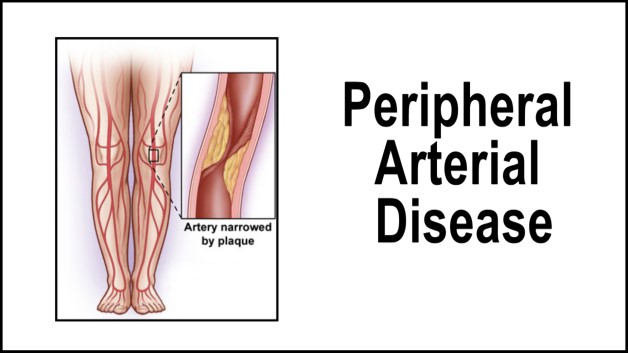 As a result of difficulties incurred from ankle ulcers, reverend Grahame Stephens was admitted into the hospital for treatment.
As a result of difficulties incurred from ankle ulcers, reverend Grahame Stephens was admitted into the hospital for treatment.
Medics initially believed Stephens problem came from was a problem his high blood pressure, but when the sores further deteriorated; they needed to reexamine their diagnosis. Physicians wound find that Stephens’ condition was the result of an obstruction in his leg’s main vein.
Unfortunately, Stephens had to experience numerous surgeries before the ulcers were able to be re-treated. This time his condition was treated with procedures normal for ulcers triggered by blood vessel obstruction.
Elderly people need to take care of their feet. For care, seek podiatrist like Dr. Howard Hyman of The Podiatry Center, P.C. Dr. Hyman can diagnose any conditions as well as care for your foot and ankle needs.
The Elderly and their Feet
As we age we start to notice many changes in our body, but the elder population may not notice them right away. Medical conditions may prevent the elderly to take notice of their foot health right away. Poor vision is a lead contributor to not taking action for the elderly. There are many complications that can lead to serious issues, if the problem is not taken care of right away.
Common Conditions
Neuropathy – can reduce feeling in the feet, and can hide many life threating medical conditions.
Reduced flexibility – prevents the ability of proper toenail trimming, and foot cleaning. If left untreated, it may lead to further medical issues.
Foot sores – amongst the older population can be serious before they are discovered. Some of the problematic conditions they may face are:
Gouging toenails affecting nearby toe
Shoes that don’t fit properly
Pressure sores
Loss of circulation in legs & feet
Edema & swelling of feet and ankles
Injuries left unnoticed
Insect or pet bites can also become inflamed and infected
Stepping on sharp objects, without notice can increase pain
Susceptible Infections
Diabetes and poor circulation can cause general loss of sensitivity over the years, turning a simple cut into a serious issue.
Bacteria- feet which are exposed to floors that have moist environments like pools and spas are prone to bacteria.
These areas can contribute to foot funguses and other diseases.
If you have any questions, please feel free to contact our office in Milburn NJ. We offer the newest diagnostic and treatment technologies for all your foot ankle injuries.
Read more on Elderly and their Feet.
Broken Foot Doesn’t Stop Athlete Matt Harrop
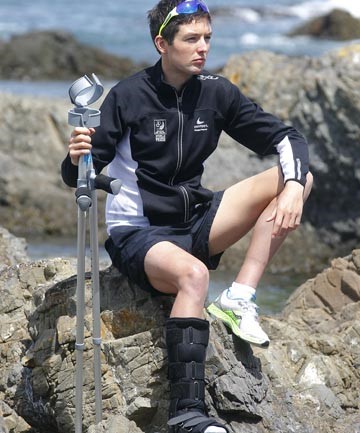 Triathlete Matt Harrop had been training doggedly for the Kona Ironman competition, which is known as one of the hardest triathlons there is. But during the first stretch of the race, he suddenly broke his foot.
Triathlete Matt Harrop had been training doggedly for the Kona Ironman competition, which is known as one of the hardest triathlons there is. But during the first stretch of the race, he suddenly broke his foot.
An ordinary man would have stopped, but triathletes don’t give up easily, and Harrop went on to finish the race in spite of his injury. He came in 335th place out of around 2000, and got his broken foot checked five days later.
A comprehensive rehabilitation program is essential for any athlete who is trying to recover from a sports injury. To learn more about rehabilitation, talk to a podiatrist like Dr. Howard Hyman of The Podiatry Center, P.C. Dr. Hyman can assess your injury and provide you with the care you need to return to the sport you love.
Foot Rehabilitation for Athletes
Injured athletes are always looking for better, faster ways to aid their recovery and get back to the sport they love. To do this, podiatrists and physical therapists are often consulted so the injured athlete can get back onto the field as soon as possible. But rehabbing an injury is just as serious as the injury itself, and going through the motions of physical therapy or rehabilitation is a necessary process to keeping that injury at bay.
Sports Therapist or Physical Therapist?
If an athlete gets a foot injury, it is essential to receive foot rehabilitation to ensure proper healing. Sports therapists are more focused on athletic-related injuries than general physical therapists. It is important for an athlete to become healed properly because if they attempt to get back into their game before they are physically well, they could re-aggravate the original injury or even suffer a new one due to their weakened state.
Physical Therapy Gives Hope
Physical therapy helps to keep athletes as active as they are physically capable, which will get them ready to return to the field once their feet become healed. Physical therapy often gives hope to athletes. However in cases where the injury is very serious, the athlete may never be able to return to the game.
To learn more about Foot Rehabilitation for Athletes, follow the link below.
If you have any questions, please feel free to contact our office in Milburn NJ. We offer the newest diagnostic and treatment technologies for all your foot ankle injuries.
Read more about Foot Rehabilitation for Athletes.
Runners Actually Benefit from Having Less Flexibility
 Researchers at the University of Cape Town, South Africa focused on the correlation between the COL5A1 gene, flexibility, and its effects on performance. The study focused on participants in the 56K Two Oceans ultra-marathon.
Researchers at the University of Cape Town, South Africa focused on the correlation between the COL5A1 gene, flexibility, and its effects on performance. The study focused on participants in the 56K Two Oceans ultra-marathon.
Participants who had the COL5A1 gene tended to run better than those who did not, but also had less flexibility. This proved to be beneficial, as tighter muscle fibers enable a runner to maintain any given pace with a lower energy cost. The study concluded that having a lower flexibility served to benefit runners.
Stretching is an easy and effective antidote for foot pain. For more information on why you should stretch, see a podiatrist like Dr. Howard Hyman of The Podiatry Center, P.C. Dr. Hyman can help you start a proper exercise regimen that involves adequate foot stretching.
Giving Your Feet the Stretch It Needs
Foot pain is very common for people. Our feet carry the entire weight of the human body all day and can be easily strained from overexertion. The feet can receive cramping which can be from any number causes. Pain in the feet can be alleviated without medication and or doctor visits.
How stretching helps:
Stretching relaxes the feet and eases pain whenever performed. It is important to perform stretching slowly and gradually with no force. Stretching should only be held for several seconds, and then relaxed.
Tips to Performing the Perfect Stretch:
Sit and cross one leg over the other by pulling the toes carefully back without overextending. Start by resting the left ankle on the right knee. With the left hand, gently flex the left foot by pulling back on the toes. Do not pull too hard, just hard enough to feel the stretch in the arch of the foot. Then point the toes of the left foot as far as you can. Rotate the motion of pointing with pulling back on the toes.
The stretch should be performed 10 to 20 times. Repeat the whole process with the other leg.
To learn more about Stretching the Feet, follow the link below.
If you have any questions, please feel free to contact our office in Milburn NJ. We offer the newest diagnostic and treatment technologies for all your foot ankle injuries.
Read more about Stretching the Feet.
More...
Junior Runner Races Ahead of Sever’s Disease
 In his athletic career Joseph Fitzpatrick ranked number one both the 3000m and the 1500m national events in his age group at merely nine years old. Unfortunately, a year later Fitzpatrick contracted Sever’s disease the following year, causing Fitzpatrick to stay off the track.
In his athletic career Joseph Fitzpatrick ranked number one both the 3000m and the 1500m national events in his age group at merely nine years old. Unfortunately, a year later Fitzpatrick contracted Sever’s disease the following year, causing Fitzpatrick to stay off the track.
Fortunately, Fitzpatrick made a full recovery and even won first place in the 1500m and fourth place in the 3000m nationally in seventh grade. Now in the eighth grade, Fitzpatrick plans to keep running at local, state, and national levels. Fitzpatrick will be participating in the upcoming Cross Country Junior Olympics in Georgia.
Sever’s disease is common in athletic children. If you think your child may be suffering from this condition, consult with a podiatrist like Dr. Howard Hyman of The Podiatry Center, P.C. Dr. Hyman can help guide your child on the road to recovery.
Sever’s Disease
Sever’s disease is also known as calcaneal apophysitis, which is a medical condition that causes heel pain in one or both feet. The disease is known to affect children between the ages of 8 and 14.
Symptoms
Acute pain – pain asscoiatied with Sever’s disease is usually felt in the heel when the child engages in physical activity such as walking, jumping and or running.
Highly active – children who are very active are among the most susceptible in experiencing Sever’s disease, because of the stress and tension placed on their feet.
Improper pronation – the rolling of the foot during walking or running and obesity are all linked to causing Sever’s disease.
Treatments
Rest – the feet and legs needs rest. In order to speed up any kind of healing time, one should refrain from sports activity.
Medication- over the counter meds will help with inflammation and also reduce heel pain.
One can also purchase shoe inserts which will help support the heel and foot. Heel pain usually diminishes after wearing the supported heel inserts.
To learn more about Sever’s Disease, follow the link below.
If you have any questions, please feel free to contact our office in Milburn NJ. We offer the newest diagnostic and treatment technologies for all your foot ankle injuries.
Read more on Sever’s Disease.
Ankle Sprain Leaves Aspiring Basketball Player on the Bench
 The Orlando Magic’s Tobias Harris sustained an ankle sprain that put him on the bench, making this season a tough one. To make matters worse, the young forward won’t return to the court anytime soon, as Jacque Vaughn said on Monday that Harris will be out ‘for weeks’. Harris’ injury was described as severe and as a result Harris currently is not practicing with his team. Andrew Nicholson and Jason Maxiell will see more of the front lines for the Orlando Magic for the meantime while Harris recovers from his injury.
The Orlando Magic’s Tobias Harris sustained an ankle sprain that put him on the bench, making this season a tough one. To make matters worse, the young forward won’t return to the court anytime soon, as Jacque Vaughn said on Monday that Harris will be out ‘for weeks’. Harris’ injury was described as severe and as a result Harris currently is not practicing with his team. Andrew Nicholson and Jason Maxiell will see more of the front lines for the Orlando Magic for the meantime while Harris recovers from his injury.
Having an ankle sprain is an painful experience, but they are often treatable. If you’re seeking relief after sustaining an ankle sprain, contact a podiatrist like Dr. Howard Hyman of The Podiatry Center, P.C. who can diagnose your problem and help to minimize your discomfort.
Ankle Sprains
Ankle sprains are quite painful and can limit your mobility. Although they are not completely unavoidable, wearing appropriately fitted shoes and stretching before physical activity can help lower your risk of incurring an injury. Ankle sprains occur when the ankle rolls over itself or twists in an awkward way, causing a ‘pop’ or ‘snap’ in the tendons around the ankle. Some causes of ankle sprains include:
- Walking
- Sports
- Previous Injuries
In addition to pain, ankle sprains are characterized by skin discoloration and swelling, which is the result of ligaments being stretched beyond their limits. Usually ankle sprains are not severe enough to warrant a trip to the emergency room as there are many home treatments available, including ACE bandages, pain relievers, medication, and of course the RICE (rest, ice, compression, elevation) method. However, if the ankle muscles or ligaments or damaged from a rip or tear, it is advisable to see a physician immediately, as the injury may require surgery.
If you have any questions, please feel free to contact our office in Milburn NJ. We offer the newest diagnostic and treatment technologies for all your foot ankle injuries.
Read more on Ankle Sprains.
Ankle Bot Helps Determine Ankle Stiffness
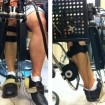 Sun Jae Professor of Mechanical Engineering of MIT’s Neville Hogan has measured the stiffness of the ankle thanks to a unique technology piece known as the AnkleBot. The mechanism works by mounting the robot to a knee brace, which is attached to a custom-designed shoe. As the individual moves his or her ankle, the robot moves the foot along the designated trajectory in directions within the ankle’s range of motion. This understanding in the ankle’s biomechanics in turn can help patients suffering from motor disorders and lead to the creation of safer footwear. For now the Anklebot is used to help train patients in regaining their mobility.
Sun Jae Professor of Mechanical Engineering of MIT’s Neville Hogan has measured the stiffness of the ankle thanks to a unique technology piece known as the AnkleBot. The mechanism works by mounting the robot to a knee brace, which is attached to a custom-designed shoe. As the individual moves his or her ankle, the robot moves the foot along the designated trajectory in directions within the ankle’s range of motion. This understanding in the ankle’s biomechanics in turn can help patients suffering from motor disorders and lead to the creation of safer footwear. For now the Anklebot is used to help train patients in regaining their mobility.
If you are suffering from foot pain and think it might be caused by motor-related issues, you should seek the care of a podiatrist like as Dr. Howard Hyman of The Podiatry Center, P.C. Dr. Hyman can examine your feet and diagnose any potential conditions.
Biomechanics in Podiatry
Podiatric biomechanics is a sect of specialized podiatry that features licensed practitioners trained in diagnosing and treating conditions that affect the foot, ankle and lower leg. Biomechanics focuses on the issues that affect the body and cause an interference with the biological structure. It also focuses on the foot and ankle’s movement and the forces that interact with them.
A History of Biomechanics
-Biomechanics historically dates back to ancient Egypt, which utilized professional foot care
-Biomechanics gained a high profile in 1974 thanks to the studies of Merton Root, who claimed by changing or controlling the ankle and foot’s forces, as well as diagnosing conditions and making corrections, could be used to gain strength and coordination to the affected area.
Improvements in modern technology are based on both therapeutic processes and past theories. These help provide a better understanding of podiatry concepts for biomechanics. Computers can provide an accurate determination regarding the movements and patterns of the lower legs and feet with important information captured.
Increasing awareness and advances in available materials have helped enhance corrective methods and offer further options for foot-related injuries. Understanding the biomechanics of the feet can help alleviate and even eliminate pain and further stress to the foot.
If you have any questions, please feel free to contact our office in Milburn NJ. We offer the newest diagnostic and treatment technologies for all your foot ankle injuries.
Read the full article on Biomechanics in Podiatry.
Arthritic Patients with Obesity Require More Drug Therapy
a
 According to a study conducted on 350 people suffering from early rheumatoid arthritis; patients suffering from obesity had records of lower remission percentages and needed anti-tumor necrosis factor (anti-TNF) therapy longer than patients at lower weight levels.
According to a study conducted on 350 people suffering from early rheumatoid arthritis; patients suffering from obesity had records of lower remission percentages and needed anti-tumor necrosis factor (anti-TNF) therapy longer than patients at lower weight levels.
The conclusion was that obese patients require more drug treatment as a result. Elisa Gremese, the author of the study, states “Obesity and rheumatoid arthritis are both on the rise, with devastating effects on individuals and society as a whole. These data reinforce the link between obesity and inflammation, and establish that (weight) is one of the few modifiable variables influencing the main outcomes in Rheumatoid Arthritis. RA affects about one in one hundred people worldwide.
Your feet are an important part of your body, and if you think you may have sustained a foot injury or developed a foot illness due to weight you should seek out the care of a podiatrist such as Dr. Howard Hyman of The Podiatry Center, P.C. Dr. Hyman can diagnose your injury as well as provide you with treatment options that work for you.
Obesity and your Feet
Since your feet are what support your entire weight when standing, any additional weight can result in pain and swelling.
Problems & Complications
Extra Weight – Even putting on just a few extra pounds could create serious complications for your feet.
Diabetes – People who are overweight are at serious risk of developing type-2 diabetes, which has an impact on your feet.
Plantar fasciitis – Pressure and stress that is placed on muscles, joints, and tendons can trigger this, which is an inflammation of tissue along the bottom of the foot.
Solutions
Footwear – Specially made footwear that supports your joints, arches, and ankles, and allows room for good circulation is a great option to mitigate pressure and pain.
Orthotics – These special inserts are inserted into shoes to absorb shock and also support your arches to keep your feet properly aligned.
For more information please follow the link below.
If you have any questions, please feel free to contact our office in Milburn NJ. We offer the newest diagnostic and treatment technologies for all your foot ankle injuries.
Read more on Obesity and Your Feet
Blog Archives
- June 2025
- May 2025
- April 2025
- March 2025
- February 2025
- January 2025
- December 2024
- November 2024
- October 2024
- September 2024
- August 2024
- July 2024
- June 2024
- May 2024
- April 2024
- March 2024
- February 2024
- January 2024
- December 2023
- November 2023
- October 2023
- September 2023
- August 2023
- July 2023
- June 2023
- May 2023
- April 2023
- March 2023
- February 2023
- January 2023
- December 2022
- November 2022
- October 2022
- September 2022
- August 2022
- July 2022
- June 2022
- May 2022
- April 2022
- March 2022
- February 2022
- January 2022
- December 2021
- November 2021
- October 2021
- September 2021
- August 2021
- July 2021
- June 2021
- May 2021
- April 2021
- March 2021
- February 2021
- January 2021
- December 2020
- November 2020
- October 2020
- September 2020
- August 2020
- July 2020
- June 2020
- May 2020
- April 2020
- March 2020
- February 2020
- January 2020
- December 2019
- November 2019
- October 2019
- September 2019
- August 2019
- July 2019
- June 2019
- May 2019
- April 2019
- March 2019
- February 2019
- January 2019
- December 2018
- November 2018
- October 2018
- September 2018
- August 2018
- July 2018
- June 2018
- May 2018
- April 2018
- March 2018
- February 2018
- January 2018
- December 2017
- November 2017
- October 2017
- September 2017
- August 2017
- July 2017
- June 2017
- May 2017
- April 2017
- March 2017
- February 2017
- January 2017
- December 2016
- November 2016
- October 2016
- September 2016
- August 2016
- July 2016
- June 2016
- May 2016
- April 2016
- March 2016
- February 2016
- January 2016
- December 2015
- November 2015
- October 2015
- September 2015
- August 2015
- July 2015
- June 2015
- May 2015
- January 2014
- December 2013
- November 2013
- October 2013
- September 2013
- August 2013
- July 2013
- June 2013
- May 2013
- April 2013
- March 2013
- February 2013
- January 2013
- December 2012
- November 2012
- October 2012
- September 2012
- August 2012
- July 2012
- June 2012
